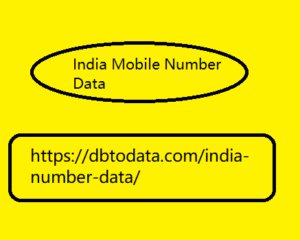Post by account_disabled on Mar 11, 2024 8:38:43 GMT
When artificial intelligence and technology are applied to improve people's conditions and save lives, the way is the right one. Today, algorithms are already used to predict heart attacks and in biology, for example, to produce drugs. Where are we headed? Alessio Pomaro Alessio Pomaro March 31, 2022 •6 min read Artificial intelligence saving lives… what an amazing moment! Artificial intelligence saving lives… what an amazing moment! Artificial intelligence , however pessimistic we may try to be, represents a huge opportunity. Today, in this context, we are experiencing a truly extraordinary period, and I believe these are simply the first steps. We will explore invisible frontiers with the help of machines.
Fei-Fei Li, Professor, Computer Science Dept, Stanford; Co-Director, Stanford India Mobile Number Data Human-Centered AI Institute - Artificial intelligence, according to Paolo Traverso Thanks to AI, we will be able to predict heart attacks Cedars-Sinai scientists have developed an AI-based algorithm to measure plaque buildup in coronary arteries, which could make heart attack prediction possible. The system was described in The Lancet Digital Health . How does it work? Plaque buildup can cause narrowing of the arteries, which makes it difficult for blood to flow to the heart, increasing the chance of a heart attack. A medical test called coronary computed tomography angiography (CTA) takes 3D images of the heart and arteries, and can give doctors an estimate of how much a patient's arteries have narrowed.

Until now, however, there has been no simple, automated and rapid way to measure the plaque visible in images. “Coronary plaque is often not measured because there is no fully automated way to do it. When it is measured, it takes an expert at least 25 to 30 minutes to make assessments, but now we can use this program to quantify plaque from CTA images in five or six seconds." - Damini Dey, Biomedical Imaging Research Institute, Cedars-Sinai Medical Center - Dey and his colleagues analyzed CTA images from 1,196 people undergoing coronary CTA at 11 centers in Australia, Germany, Japan, Scotland and the United States. The AI algorithm was trained to measure plaque by training on coronary CTA images of 921 people previously analyzed by trained doctors.
Fei-Fei Li, Professor, Computer Science Dept, Stanford; Co-Director, Stanford India Mobile Number Data Human-Centered AI Institute - Artificial intelligence, according to Paolo Traverso Thanks to AI, we will be able to predict heart attacks Cedars-Sinai scientists have developed an AI-based algorithm to measure plaque buildup in coronary arteries, which could make heart attack prediction possible. The system was described in The Lancet Digital Health . How does it work? Plaque buildup can cause narrowing of the arteries, which makes it difficult for blood to flow to the heart, increasing the chance of a heart attack. A medical test called coronary computed tomography angiography (CTA) takes 3D images of the heart and arteries, and can give doctors an estimate of how much a patient's arteries have narrowed.

Until now, however, there has been no simple, automated and rapid way to measure the plaque visible in images. “Coronary plaque is often not measured because there is no fully automated way to do it. When it is measured, it takes an expert at least 25 to 30 minutes to make assessments, but now we can use this program to quantify plaque from CTA images in five or six seconds." - Damini Dey, Biomedical Imaging Research Institute, Cedars-Sinai Medical Center - Dey and his colleagues analyzed CTA images from 1,196 people undergoing coronary CTA at 11 centers in Australia, Germany, Japan, Scotland and the United States. The AI algorithm was trained to measure plaque by training on coronary CTA images of 921 people previously analyzed by trained doctors.

